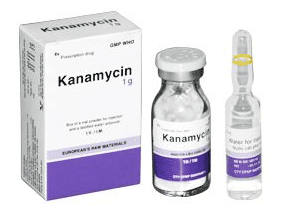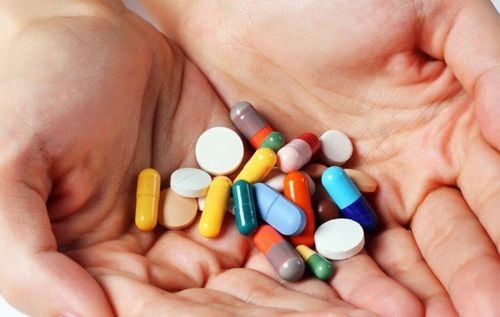This is an automatically translated article.
Bitazid drug is prepared in the form of a powder for injection with the main ingredient being Ceftazidime. It is used in the treatment of infections caused by bacteria sensitive to Ceftazidime.
1. What are the effects of Bitazid 1g?
What is Bitazid 1g drug? 1 vial has the main ingredient is 1g Ceftazidime in the form of ceftazidime pentahydrate and other excipients.
Ceftazidime is a 3rd generation cephalosporin antibiotic. Ceftazidime has a bactericidal effect by inhibiting bacterial cell wall synthesis enzymes. Bitazid is stable to most bacterial beta-lactamases with the exception of bacteroides enzymes. Bitazid is sensitive to many aminoglycoside-resistant gram-negative organisms, cephalosporins and ampicillin-resistant gram-positive organisms.
Indications: What are the effects of Bitazid 1g? Bitazid drug 1g is used in the following cases:
Treatment of lower respiratory tract infections; Treatment of skin and skin structure infections; Treatment of urinary tract infections, both complicated and uncomplicated; Treatment of intra-abdominal infections; Treatment of gynecological infections Treatment of central nervous system infections (including meningitis). Contraindications : Do not use Bitazid 1g in the following cases:
People with a history of shock when using the drug; People who are allergic or hypersensitivity to cephalosporin antibiotics. Contraindications to the use of Bitazid 1g here should be understood as absolute contraindications. That is, not for any reason that is contraindicated can be flexible in using Bitazid 1g.
2. Usage and dosage of Bitazid 1g
How to use and dose Bitazid 1g, patients can refer to the following:How to use:
Use Bitazid 1g by intravenous infusion or deep intramuscular injection, usually injected into the upper quadrant. of the buttocks or at the lateral part of the thigh; Method of preparation of solution for infusion: Solution for deep intramuscular injection: Dissolve Bitazid 1g in 3ml of distilled water for injection or in 0.5% or 1% lidocaine hydrochloride solution; Solution for intravenous use: Mix Bitazid 1g in 10ml of distilled water for injection, or 5% dextrose solution, or 0.9% sodium chloride solution; Solution for infusion: Mix the drug Bitazid in solutions as in intravenous injection but with a concentration of 1-2 g of the drug in 100ml of solvent. Dosage:
The usual dose for adults is 1g every 8 hours or 2g every 12 hours, by deep intramuscular injection or intravenous infusion; Patients with liver failure: No need to change, adjust the dose; Patients with renal impairment: The dose should be adjusted according to the degree of renal impairment. The recommended dosage of Ceftazidime for patients with specific renal impairment is as follows: Creatinine clearance is 31 - 50ml/min: Dose of 1g, every 12 hours; Creatinine clearance is 16 - 30ml/min: Dose of 1g, every 24 hours; Creatinine clearance is 6 - 15ml/min: 500mg dose, every 24 hours; Creatinine clearance less than 5ml/min: 500mg every 48 hours; Dosage of Bitazid 1g for pediatric patients as prescribed by a qualified doctor or as recommended below: For infants from 0 to 4 weeks old: Use a dose of 30mg/kg intravenously, 12 hours/day. time; For children from 1 month to 12 years old: Use a dose of 30 - 50mg/kg intravenously, up to a maximum of 6g/day, every 8 hours; Use of Bitazid in the elderly: The usual dose should not exceed 3g/day, especially in patients over 70 years of age. Because Bitazid 1g is indicated by intravenous infusion, to ensure safety and effectiveness, the infusion should be done in a hospital and under the close supervision of medical staff. This also minimizes overdose and missed dose of Bitazid. Patients prescribed infusion should follow the instructions of the doctor and medical staff.
3. Side effects of the drug Bitazid 1g
During the use of Bitazid 1g, patients may experience local side effects such as: Swelling at the injection site, itchy rash, hypersensitivity, diarrhea, vomiting, abdominal pain, nausea. Patients should inform the treating doctor about the side effects when taking Bitazid, especially when the phenomenon is unusually severe.
4. Be careful when using Bitazid 1g
A few notes for patients to remember before and while using Bitazid 1g:
Caution should be exercised when using Bitazid for those with a history of hypersensitivity to penicillins, cephalosporins and ceftazidime; There is a risk of cross-reactivity between penicillins and cephalosporins; When using Bitazid, the patient may have pseudomembranous colitis, so caution should be exercised; The total daily dose of Bitazid should be reduced to 1g in patients with renal impairment; High concentrations of Bitazid can cause convulsions, loss of balance, encephalopathy and neuromuscular excitability; Treatment with Ceftazidime may reduce prothrombin activity in patients with renal, hepatic or malnourished patients; Use caution when using Bitazid 1g in patients with a history of gastrointestinal disease, especially dysentery; Cephalosporins are considered safe during pregnancy. However, at present, there are no satisfactory and closely controlled scientific studies on pregnant subjects, so Bitazid should only be used for this subject only when absolutely necessary and prescribed by a doctor. . Ceftazidime is excreted in breast milk, so caution should be exercised in the use of Bitazid in lactating women. In summary, Bitazid drug is prepared in the form of a powder for injection with the main ingredient being Ceftazidime. It is used in the treatment of infections caused by bacteria sensitive to Ceftazidime. During the use of Bitazid 1g, the patient should strictly follow the instructions from the doctor, the medical staff perform the treatment infusion to achieve the best effect, limiting the unpredictable side effects. affect health.
Follow Vinmec International General Hospital website to get more health, nutrition and beauty information to protect the health of yourself and your loved ones in your family.













